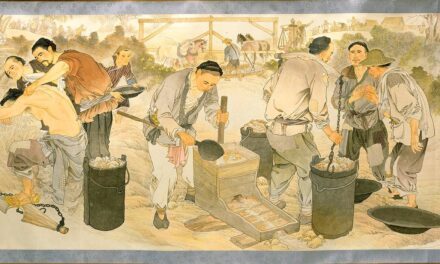Morgan Williams
Can a Bucket be Art?
What about if I put sand in the bucket? What about if I add water to the bucket too?
What about if the sand and water is from a pacific island that’s disappearing due to climate change? What about if I fill a whole gallery with buckets of sand with water from disappearing islands?
Conceptual art usually tells us a story beyond what might not be immediately evident. It asks the viewer to explore an idea that is hidden. Often there’s a few words on the wall to help viewers. Or sometimes the artist offers no assistance. They leave it to the audience to find meaning. This can be annoying or thrilling. It can make us question art, or the artist. That’s how conceptual art began. A urinal was placed in a gallery in France in 1928 by Marcel Duchamp to simply ask ‘What is Art?’
I personally love conceptual art. A hidden meaning excites me. It’s like a puzzle or crime show for me to solve. I like to guess the artist’s meaning before reading about their work. I make up my own meaning. Do I like it? Do I hate it, and if so, why? Would I have it in my home? Is it even for sale?
The current show at Radius by Jonathon Harris has conceptual elements. The first time I stumbled across one of Jon’s works was at Radius earlier this year. It was a giant ball of black tulle over a metre in diameter which had suddenly appeared in our space. We have lots of events at the gallery so I thought perhaps it was someone’s decorations. I then received a video of someone sweeping around a giant black ball of fabric. Hang on! That’s the same ball of black tulle over there! The two items went together and were part of this year’s ChillOut exhibition.
Spoiler alert: I’m now going to discuss the current show by Jonathon Harris. If, like me, you prefer to find your own meanings before viewing an exhibition then I suggest you stop reading this right now!
I caught up with Jon a few days ago to dig a little deeper into the themes of his exhibition titled “The Assumptions of Memory”. Upon entering the show, I was struck by how visually coherent it is as a body of work. Each piece shares a common aesthetic and is positioned in such a way that nothing is competing for attention. There is a haunting beauty that draws the viewer in which is both mesmerising and at times, unsettling. A man covered in feathers who seems disconnected from his predicament. What is he remembering? Another person is tearing at their own face whilst blindfolded. Is there some historic self-loathing going on here? As I traverse the exhibition, I also discover objects of beauty: a delicate wireframe in the shape of a face covered in crystals, although the title suggests something less beautiful; a giant gold work with dimensional shapes submerged in resin beckons from the wall. The memories held within each artwork on display are strong and provocative.
My first question to Jon was how he classifies his art practice. He quickly replied that “I’m an artist who puts on shows” and explained that he would use the term “performance artist” but people rarely understood exactly what he meant.
He explained he is interdisciplinary, Drawing on his performance background, he sees all art as containing an idea that leads to an action. He uses a wide variety of mediums and tools to produce his work. His process always starts as an idea followed by lots of research and then a final concept emerges.
I was curious to find out more about the big ball of tulle and the accompanying video. Jon explained that the work started out as a costume for a performance at Melbourne’s LON gallery. Not only did the fabric become unwieldy but Jon also wanted to memorialise it after the performance. He took to sewing it into a giant shape. This required over 20 balls of wool, 120 metres of fabric, and a year to complete. I learnt that the fabric was torn, representing the tradition of “Kriah”, where clothes are torn when a person dies. This ball represented several memories, helping me connect the dots with the significance of the exhibition title. Through our discussion I discovered more of Jon’s memories. Suddenly I felt like I was inside a big diary, surrounded by his memories.
Traditionally conceptual art is focused more on the ideas behind the work than aesthetics. Jon’s work is all highly aesthetic but it also contains ideas that are initially hidden from the viewer. He seems to be traversing several genres, themes, and mediums all at once.
If you would like to learn more about Jon’s art and his show, please join us on Sunday 10th Dec from 2-3pm for his artist talk and performance. His show closes on the 16th of December. For more information visit: www.radiusart.com.au
Morgan Williams is the co-director with Kim Percy of Radius Art Space. His art practice spans a 30 year period and explores a diverse range of mediums and topics.





